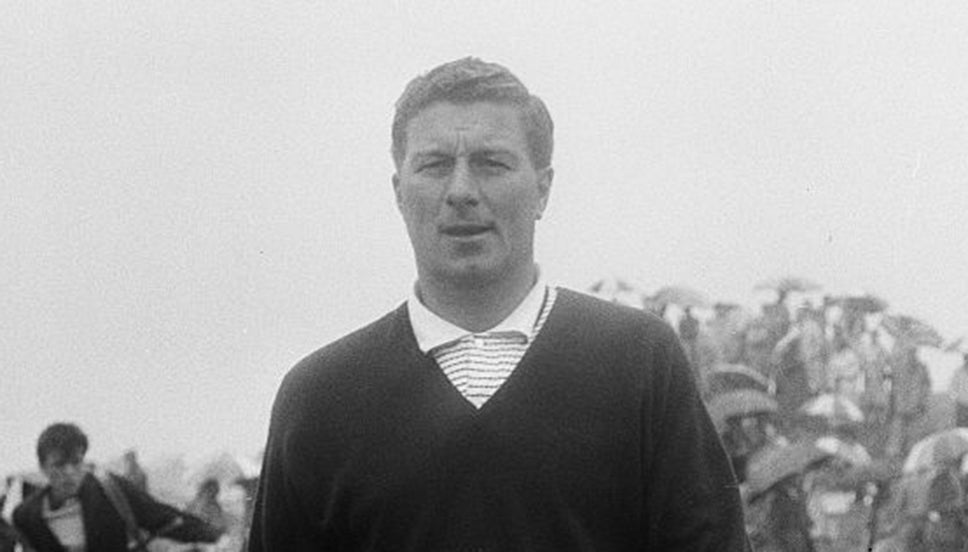The Open began in earnest at Royal Lytham and St Annes on Wednesday 2nd July in 1958, with a superb round of 66 putting Peter Thomson in the lead, a familiar position for the Australian who had won three of the last four Opens and was the red-hot favourite for the title.
A second round of 72, however, opened the door for the field on Thursday, and Christy O'Connor Snr walked through it, shooting a 68 to accompany his first-day 67 and take the lead on 135 strokes, seven under. Thomson was tied third, behind Argentinian Leopoldo Ruiz in second, who himself matched the lowest single round score in Open history with a 65.
His 65 was compiled with a front nine of 30 strokes, which amazingly included a six on his seventh hole. Through nine holes, he had gathered huge crowds and, with a display of power and finesse, he treated the galleries to a record round.
It was clear that this was already a record-breaking Championship, but a sign of things to come in determining the outcome occurred on Thursday night.
Peter Mills, a Ryder Cup player, stood on the 18th tee knowing his situation. It was a strange one indeed.
The cut mark was capped at a maximum of 50 players, so any players positioned under that mark on the leaderboard would make the final 36 holes. Mills was tied for 41st with 10 other players, meaning if he made a four on his last hole, everyone would be knocked out.
However, for Mills, a five would have also been a death knell, and only a three would do. He missed the three by inches and tapped in for a four, knocking out all 10 other players and marking the cut at just 40 players at 147.
Mills knew where he stood, and joked after his round: "It really suited me to sink the putt and get my four, as I will save a day's expenses."
On Friday morning, Thomson returned to the top of the pile with a superb 67 to reach eight under par. After three rounds, the Australian lay two strokes ahead of his playing partner Dave Thomas and Belgian Flory van Donck. A further stroke behind lay O'Connor and Ruiz, as well as Eric Brown who had brilliantly matched Ruiz's record round of 65.
And of all the numerous contenders, it would be Brown, who began the final day eight strokes off the lead, who perhaps had the best chance of all to win The Open.
Brown played his last nine holes in round three in 30 strokes en route to his 65, and he carried over his top golf into the final round. The Scotsman opened up a large lead to the point where, entering the 18th hole, a four would have won him The Open.
Brown was not to know this at the time, having teed off considerably earlier than his competition, but he nonetheless missed a very short putt to take six strokes on his 72nd hole, and post a total of five under after a final round of 71.
Thomas and Thomson, playing together in the penultimate group later in the day, both needed fours to beat Brown outright on the 18th hole by one, and both obliged. Thomas had a long putt that lipped out for his birdie, while Thomson also had a putt that would have ultimately secured victory, but missed by just inches. Both players tapped in for their par, and entered the clubhouse on six under.
More near misses were to come. Midway through the final round, Thomas and Thomson had taken on many of the supporting fans, and O'Connor and Ruiz had almost gone under the radar. But, heading into the final hole, the exact same proposition awaited them as did the previous group, with fours required to create a four-way play-off.
Ruiz unfortunately took a seven, eventually finishing in a tie for fifth, but O'Connor, after nearly holing out with a recovery shot, had a putt for his four from 15 or so feet. The putt looked to be in, but again slipped past by the narrowest of margins, just inches away.
A play-off then ensued the following day between Thomson and Thomas, where the Australian posted three under through 36 holes to the Welshman's one over, and claimed his fourth Claret Jug in five years.
Thomson, who had been struggling all week with a cold and drinking pineapple juice as a cure for his ailment, proved once again that he was the man to beat in The Open. It was his seventh consecutive top-two finish in golf's original Major, and represented the fourth of his eventual five titles.
But The 87th Open could just have easily gone a different way, as in the end it was a matter of inches that separated the Champion from his closest rivals.
